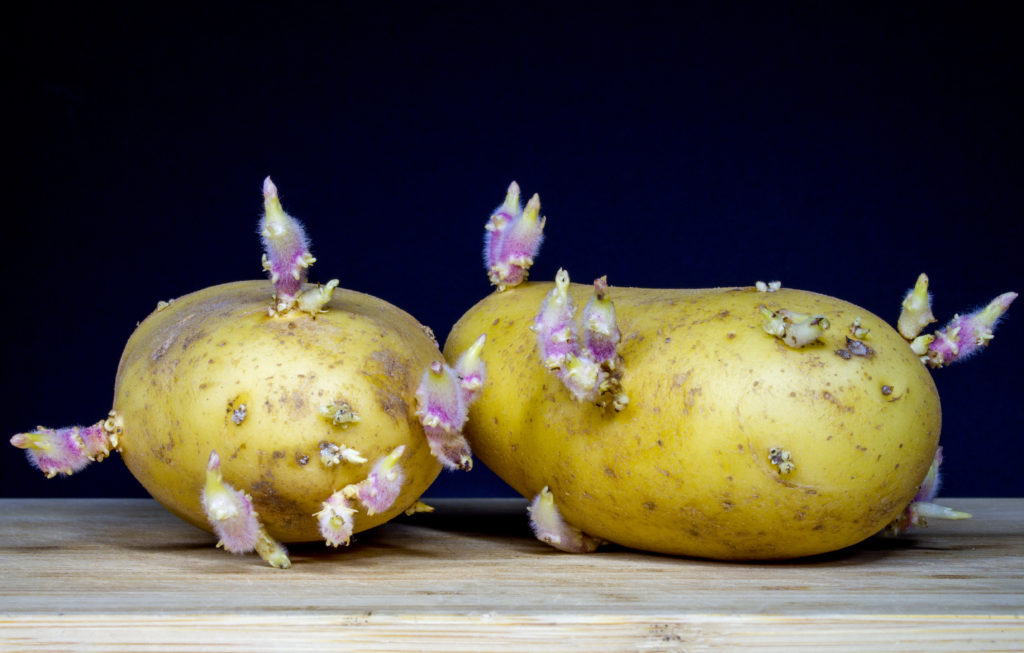Beware of potatoes with Shoots
The Federal Institute for risk assessment (BfR) warns against the consumption of potatoes with Shoots or green. Too many people think that eating potatoes with green not health would be in danger. Experts warn, however, to caution and advise, potatoes with sprout and green areas to sort out, since solanine with the appropriate dose is toxic. Too many people continue to poison themselves.
Case of poisoning by a potato dish
Potatoes with Drive and with green Bodies can contain the dangerous substance, solanine, and should be sorted out better. The Federal Institute for risk assessment (BfR) has, on the occasion of a poisoning case by way of a potato dish. Depending on the recorded amount of solanine can cause poisoning with symptoms such as dizziness, headache, stomach pain, Nausea and vomiting, as well as Scratching and Burning in the throat. In a high dose of the substance may be, according to the experts, even fatal.

Green and strong the Bud end of potato tubers do not consume
Glycoalkaloids, including solanine as an important representative, are natural ingredients in the potato.
“From the last 100 years, only a few cases of poisoning by potato dishes are known and documented”, explains BfR President Professor Dr. Dr. Andreas Hensel in a statement.
“In order to avoid health risks, it should nevertheless not be green and strong germ-eaten tubers at the end of Potato.”
Storage and preparation of potatoes
In order to keep the recording on Glykoalkaloiden as low as possible, reminiscent of the BfR to the following usual recommendations in connection with the storage and preparation of potatoes:
Potatoes cooling should be dark and stored in a dry place. Old, dried, green or strongly germinating potatoes, and potato peels as Snacks, which consist mainly of potato peelings, are for consumption not suitable.
Green and a so-called “eyes” of potatoes should be generously removed. If consumers want consumers eat the shell, this is basically the only intact, fresh potatoes suitable.
Potato dishes should not be consumed if you have a bitter taste. In particular, small children should not eat unpeeled potatoes.
Consumers should not use the cooking water from potatoes. Frying fat for the production of potato products should be changed regularly
Significant unreported cases
Glycoalkaloids are natural ingredients, the plants in the night shade, such as potatoes, are included. They accumulate in particular in the green, germinating and damaged potatoes as well as potato skins.
In the potato, in particular, the two Glycoalkaloids, α-solanine and α-Chaconine. They serve as agents of the Plant to ward off pests and disease.
When people of slight poisoning include Nausea, abdominal pain, vomiting, and diarrhea, sometimes accompanied by fever.
In the case of severe Poisoning, loss of consciousness, very rarely up to the complete loss of consciousness, as well as other disorders of brain function, breathing, or circulation may occur.
Individual fatal cases of poisoning have been reported in the literature. From the last 50 years, no deaths have been due to poisoning by Glykoalkaloiden described.
In addition, only a few cases of poisoning from the last 100 years in total are known and documented. Due to the nonspecific symptoms, especially in the case of lighter poisoning, could, however, there are a not insignificant number of unreported cases.
Glycoalkaloid content of potatoes is less than 100 mg per kg fresh weight.
On the occasion of a poisoning case by a potato dish, in which, in November 2015, a family was sick after she had eaten a potato dish with a high Glykoalkaloiden has a rating of potatoes, the BfR the consumption of Glykoalkaloiden about Food.
The BfR is derived on the Basis of current knowledge, a provisional NOAEL (No Observed Adverse Effect Level) of 0.5 milligrams (mg) Glycoalkaloids per kilogram (kg) of body weight and day.
This corresponds to the highest dose at which no adverse health effects have been observed. To avoid Exceeding the NOAEL, the glycoalkaloid content in potatoes is less than 100 mg per kg fresh weight.
These recommendations are to be considered in view of the current incomplete data as provisional.
Previously classified in General potatoes with a glycoalkaloid content of 200 mg per kg as safe.
To improve the data situation in relation to the existing glycoalkaloid usual potatoes for levels in trading, the BfR has proposed the implementation of appropriate tests (food monitoring). (ad)
